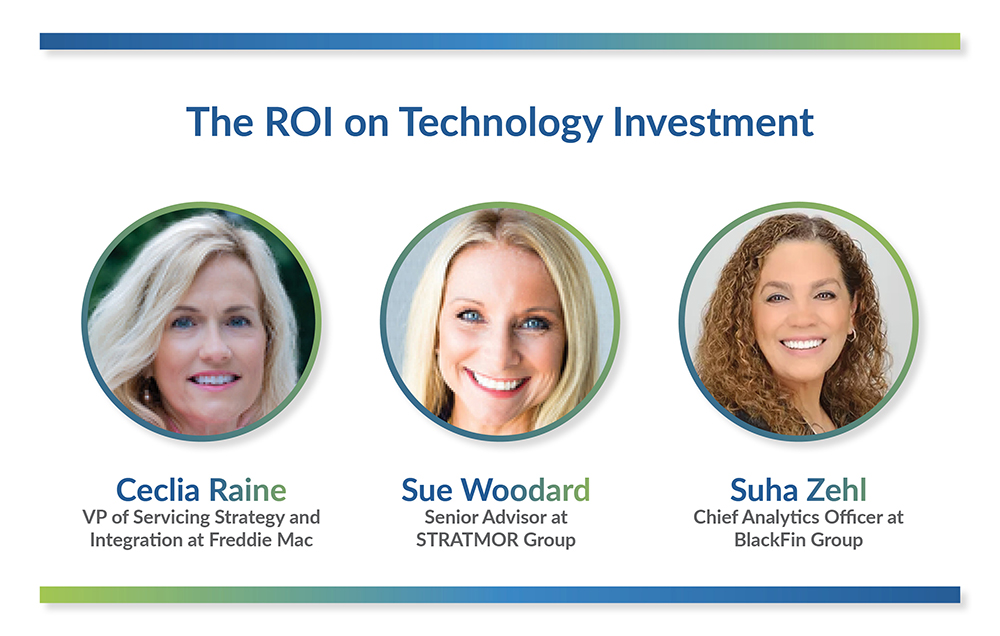
November 22, 2022
As new technology has emerged over recent years, mortgage originators and servicers have been investing in newly available tools and solutions that promise better efficiency and cost savings. However, some companies are still struggling to realize ROI on these investments. Leaders and experts in mortgage technology came together at this year’s MBA Annual to offer some explanations for why institutions may not be seeing the ROI they expected, alternative perspectives on what ROI they may actually be receiving, and tips for how best to use these technologies to their fullest potential. While the current reality of technology in the mortgage industry is improving incrementally on outdated and inefficient processes instead of reinventing the processes entirely, there are still ways to take advantage of what is available until the industry comes together to collaborate and create that new, reimagined process.

For those who have been disappointed with the ROI on their technology investments, the panel suggested the problem may not fully lie with the technology itself but the data being captured around its usage. Tracking the benefits and small wins within the entire ecosystem of the borrowing lifecycle can illuminate far-reaching effects that are not as obvious if the focus is solely on the processes that directly touch the technology. Sometimes, the benefits offered by these new toolsets can come through best practices gained while reimagining how internal processes function and integrate with each other.
To see the full picture of a solution’s impact, mortgage companies need to be disciplined in their tracking and must be clear on what return they want out of the investment. The main categories of such returns can be categorized as profitability, productivity, people, and risk prevention. Most ROI is won in increments in one or multiple of these areas, whether that is through time saved via automation, removing risk to investors and borrowers, reducing personnel resource demands, or more intangible returns such as goodwill and deep partnerships. Data collected to evaluate these areas should be reflective of what is really happening with the implementation and usage of the technology, with cleansing and normalizing performed as the first step of processing and analyzing. Once descriptive data is established and you understand how the solution is being used currently, then you can progress to more prescriptive data that leads to future improvements.
One of the challenges many companies run into is that there is low buy-in among their team, especially from leadership. Projects succeed or fail because of the people involved in the initial buy-in and throughout change management. For the technology to have time and opportunity to maximize returns, people on the team need to buy in fully and commit to adopting the technology; this means the champions among the team need to set firm expectations of its capabilities and the effort required of the team for that potential to be realized. Communicating the vision and what it solves may seem obvious to those pushing for the technology, but it is essential to explain the why, how, and what to clarify how each team member is involved in the journey from adoption to realizing returns. Engagement from the team needs to be earned, so allow them to ask questions and collaborate during the development and implementation stages and establish a proper change management strategy that encourages confidence in the transition.

Minimizing friction with an easy user experience for both the internal team and the borrower will bolster the revenue and value once the technology is in use. This is likely to be a major area of ROI, but the impact on borrowers needs to be tracked in order to understand it. Understanding what data is needed from existing sources and what new data may need to be collected for fully useful analysis may take some trial and error to pin down. Consider processes from the very beginning of the borrower lifecycle and do not limit data collection to only those touchpoints that involve the borrower directly; customer experience includes the internal processes as well because complications within the team delay the later stages of the process for the borrower and can be felt by them in their experience. Eliminating frustration points, even those that seem small or occur in earlier stages of the timeline, makes a huge positive impact on customer experience by saving time and effort.
It is never too late to start reevaluating any legacy tech with a fresh perspective on the available options in the marketplace. The mortgage industry is cyclical, and the current state offers a prime opportunity to stop and evaluate. Though it might seem tedious and a low priority, taking stock of what technology has been missed, what is underutilized, and what new integrations may be available to connect them all can offer a major boost in ROI. If you determine new technology is necessary, look for solutions that allow you to scale and meet the goals planned in your strategy.

© 2026 Venture Solutions Inc. All Rights Reserved